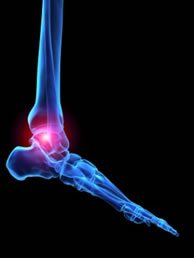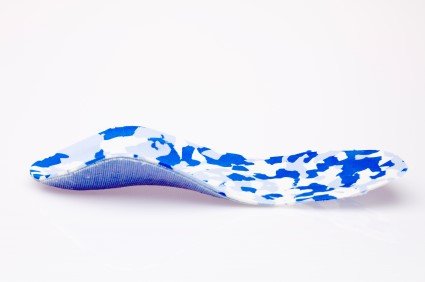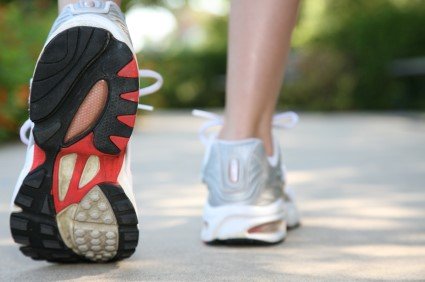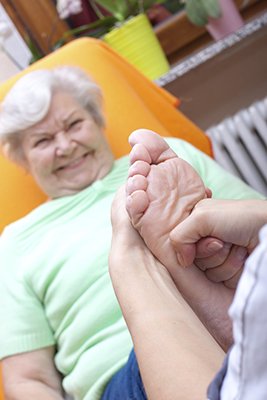Items filtered by date: November 2016
Possible Link between Rheumatoid Arthritis and Wheat Products
 There is a growing body of research that shows a possible link between wheat products and rheumatoid arthritis. Rheumatoid arthritis is an autoimmune disease that can affect the joints and bones in many parts of the body, including ankles and feet. Certain proteins, ATI’s (amylase-trypsin inhibitors), may be causing inflammation in certain non-celiac patients. This means that wheat products could be contributing to symptoms associated with rheumatoid arthritis. Early detection of the disease is crucial as the prognosis in these cases has greatly improved as medical science has advanced.
There is a growing body of research that shows a possible link between wheat products and rheumatoid arthritis. Rheumatoid arthritis is an autoimmune disease that can affect the joints and bones in many parts of the body, including ankles and feet. Certain proteins, ATI’s (amylase-trypsin inhibitors), may be causing inflammation in certain non-celiac patients. This means that wheat products could be contributing to symptoms associated with rheumatoid arthritis. Early detection of the disease is crucial as the prognosis in these cases has greatly improved as medical science has advanced.
Because RA affects more than just your joints, including the joints in your feet and ankles, it is important to seek early diagnosis from your podiatrist if you feel like the pain in your feet might be caused by RA. For more information, contact one of our podiatrists of Dr. Kane & Associates, P.C. Our doctors can provide the care you need to keep you pain-free and on your feet.
What Is Rheumatoid Arthritis?
Rheumatoid Arthritis (RA) is an autoimmune disorder in which the body’s own immune system attacks the membranes surrounding the joints. Inflammation of the lining and eventually the destruction of the joint’s cartilage and bone occur, causing severe pain and immobility.
Rheumatoid Arthritis of the Feet
Although RA usually attacks multiple bones and joints throughout the entire body, almost 90 percent of cases result in pain in the foot or ankle area.
Symptoms
- Swelling & pain in the feet
- Stiffness in the feet
- Pain on the ball or sole of feet
- Joint shift and deformation
Diagnosis
Quick diagnosis of RA in the feet is important so that the podiatrist can treat the area effectively. Your doctor will ask you about your medical history, occupation, and lifestyle to determine the origin of the condition. Rheumatoid Factor tests help to determine if someone is affected by the disease.
If you have any questions please feel free to contact our office located in Westland, MI. We offer the newest diagnostic and treatment technologies for all your foot and ankle needs.
Rheumatoid Arthritis in the Feet
Although rheumatoid arthritis attacks multiple bones and joints throughout the entire body, ninety percent of people who actually develop this condition usually do so in the foot or ankle area. Those who develop this kind of arthritis in the feet usually develop symptoms around the toes and forefeet first, before anywhere else. Rheumatoid arthritis appears to have a genetic component. If it runs in the family, then you will be more likely to develop it as well.
Rheumatoid arthritis is an autoimmune disorder in which the body’s own immune system attacks the lining of the membranes surrounding the joints. This causes inflammation of the membrane lining, and the gradual destruction of the joint’s cartilage and even bone.
Some of the most common symptoms that are associated with RA include pain and swelling of the feet. Stiffness in the feet is also another common symptom that people experience. Those who have RA in the feet usually feel the pain in the ball or sole of their feet. This can get to be very painful at times. A person's joints can even shift and become deformed after a period of time.
In order to properly diagnose RA in the feet it is usually necessary for a doctor or podiatrist to evaluate the area. Your doctor will also question you about your medical history, occupation, etc., to determine whether anything in your lifestyle may have triggered the condition. There are a number of tests that may be performed to help diagnose RA, such as a rheumatoid factor test. There is, however, no one single test that will tell you for sure if you have RA. There are different X-rays that can be taken as well to determine if a person has RA in their feet.
There is a range of treatment options for rheumatoid arthritis. Treatment of RA is usually a lifelong process that includes a variety of methods of treatment and therapy. Your doctor can prescribe special shoes that should help with arch support as well as heel support. A physical therapist can help those with this condition learn exercises which will keep their joints flexible. Surgery may be needed to correct some of the issues with the feet, such as bunions, and hammertoes. Fusion is usually the most successful surgical option for rheumatoid arthritis. However, people need to keep in mind that there are some risks associated with these surgeries.
Arch Support and Your Feet
 It is no secret that high heels are bad for the feet. The human foot is not designed to wear extremely high heels, forcing the foot to adjust to the unnatural height difference when heels are worn. Additionally, women who have flat feet are more susceptible to foot problems due to a lack of arch support in high heels. Examples of such foot problems include arch pain, foot cramps, tired feet, and leg fatigue. Over-the-counter arch products are a solution to the lack of arch support in many types of footwear and may help prevent foot problems in the future.
It is no secret that high heels are bad for the feet. The human foot is not designed to wear extremely high heels, forcing the foot to adjust to the unnatural height difference when heels are worn. Additionally, women who have flat feet are more susceptible to foot problems due to a lack of arch support in high heels. Examples of such foot problems include arch pain, foot cramps, tired feet, and leg fatigue. Over-the-counter arch products are a solution to the lack of arch support in many types of footwear and may help prevent foot problems in the future.
If you are having discomfort in your feet and would like to try orthotics, contact one of our podiatrists from Dr. Kane & Associates, PC. Our doctors will attend to all of your foot and ankle needs.
What are Orthotics?
Orthotics are inserts you can place into your shoes to help with a variety of foot problems such as flat feet or foot pain. Orthotics provide relief and comfort for minor foot and heel pain, but can’t correct serious biomechanical problems in your feet.
Over-the-Counter Inserts
Orthotics come in a wide variety of over-the-counter inserts that are used to treat foot pain, heel pain, and minor problems. For example, arch supports can be inserted into your shoes to help correct over arched or flat feet, while gel insoles are often used because they provide comfort and relief from foot and heel pain by alleviating pressure.
Prescription Orthotics
If over-the-counter inserts don’t work for you, or if you have a more severe foot issue, it is possible to have your podiatrist prescribe custom orthotics. These high quality inserts are designed to treat problems such as abnormal motion, plantar fasciitis, and more severe heel pain. They can even be used to help patients suffering from diabetes by treating foot ulcers and painful calluses, and are usually molded to your feet individually, which allows them to provide full support and comfort.
If you are experiencing minor to severe foot or heel pain, it’s recommended to speak with your podiatrist on the possibilities of using orthotics. A podiatrist can determine which type of orthotic is right for you and allow you to take the first steps towards being pain free.
If you have any questions please feel free to contact one of our office located in Westland, MI. We offer the newest diagnostic and treatment technologies for all your foot and ankle needs.
Ankle Foot Orthotics for Athletes
Ankle and foot orthotics, known as AFOs, are custom-made inserts. They are shaped and contoured to fit inside a shoe and used to correct an irregular walking gait or provide cushioning. Orthotics come in a variety of different models and sizes, including over the counter and customizable variants. Customizable ones should be prescribed through a podiatrist who specializes in customized footwear and orthotics design and management.
AFOs are often used by athletes including track and field runners, cyclists, professional dancers, ice skaters, and even golfers. They benefit a lot from custom made AFOs by preventing injuries from occurring and providing cushioning to keep pain levels down to a minimum. Ankle foot orthotics allows for the correct positioning of the feet. Orthotics also act as shock absorbers to help keep pressure and stress off the foot and ankle. They can also relieve back pain and hip pain while restoring balance and improving an athlete’s performance.
Orthotics help alleviate pain by controlling the movement of both your feet and ankles. They are custom designed by a podiatrist to help treat foot problems. These problems include flat feet, spurs, arthritis of the ankle or foot, ankle sprains, weakness, and drop foot, a condition in which the patient cannot raise their foot at the ankle joint.
With custom orthotics, a patient will go through a complete examination of the foot and ankle. This is followed by the ankle and foot being cast and fitted for the proper orthotic. Depending upon the final result of the tests, a stretching treatment is created with the specific shoe fitting in mind. After a patient has been fitted to the shoes, adjustments can be made in order to get the perfect fit. Evaluations are then usually set up to monitor the patient in the coming weeks to see how they are adjusting.
AFOs are also available over the counter and are more common than custom fit ones. Athletes that have generally low aches and pains in the foot, ankle, or lower back area can use an over the counter version of these orthotics. Weight is distributed evenly throughout the bottom of the foot thanks to the arch support they give. However, when an injury or ailment occurs, it is usually not enough to try and remedy it with an over the counter version. In either case, a podiatrist will be able to offer the best advice and treatment when it comes to foot and ankle orthotics.
79 Percent of Runners Experience a Foot Injury
 About 79 percent of runners experience some type of foot injury each year. It requires a bit of extra work to keep your feet in top running order, however it is necessary in order to prevent injury. If you want to make your feet less susceptible to injury, you should focus on strengthening your soles. According to clinical director Luke Bongiorno, "When your feet are stronger, you'll have better propulsion, which can help you run faster and more efficiently.” You should also be more selective when it comes to buying a new pair of running shoes. Recent studies have shown that minimalist sneakers may be more effective in preventing injury compared to running sneakers with high arches.
About 79 percent of runners experience some type of foot injury each year. It requires a bit of extra work to keep your feet in top running order, however it is necessary in order to prevent injury. If you want to make your feet less susceptible to injury, you should focus on strengthening your soles. According to clinical director Luke Bongiorno, "When your feet are stronger, you'll have better propulsion, which can help you run faster and more efficiently.” You should also be more selective when it comes to buying a new pair of running shoes. Recent studies have shown that minimalist sneakers may be more effective in preventing injury compared to running sneakers with high arches.
Exercising your feet regularly with the proper foot wear is a great way to prevent injuries. If you have any concerns about your feet, contact one of our podiatrists of Dr. Kane & Associates, P.C. Our doctors can provide the care you need to keep you pain-free and on your feet.
How to Prevent Running Injuries
Many common running injuries are caused by overuse and overtraining. When the back of the kneecap starts wearing out and starts causing pain in your knee, this is commonly referred to as runner’s knee. Runner’s knee is a decrease in strength in your quadriceps and can occur if you’re not wearing properly fitted or supporting shoes. To prevent runner’s knee, focusing on hip strengthening is a good idea, as well as strengthening your quads to keep the kneecaps aligned.
What Are Some Causes of Running Injuries?
- One cause of a common running injury is called iliotibial band syndrome.
- Plantar fasciitis is also another common injury.
- Stress fractures can occur from overtraining, lack of calcium, or even your running style.
Best Ways to Prevent Running Injuries
- Wear footwear that fits properly and suits your running needs.
- Running shoes are the only protective gear that runners have to safeguard them from injury.
- Make a training schedule. Adding strengthening exercises as well as regular stretching can help keep you strong and limber and can lessen the possibility of injuries.
- Stretching keeps muscles limber, this will help you gain better flexibility.
If you have any questions please feel free to contact our office located in Westland, MI. We offer the newest diagnostic and treatment technologies for all your foot and ankle needs.
How to Prevent Running Injuries
Overtraining and overusing the feet are the main causes of common running injuries. A number of these common injuries are caused by overrunning. Runner’s knee is a condition that is characterized by the back of the kneecap beginning to wear away and cause pain in the knee. This frequently occurs due to either a decrease in strength in the quadriceps muscles or ill-fitting shoes that are lacking in proper support for the inside of the forefoot. Strengthening exercises focusing on the quad muscle and sports orthotics are the usual treatments for those suffering from runner’s knee. Prevention of the condition lies in a focus on hip strengthening and quad-strengthening to keep the kneecap aligned. To help learn the best exercise to heal runner’s knee, one can also undergo physical therapy.
One common injury, called iliotibial band syndrome, is often caused by overtraining. This condition occurs when the iliotibial band gets irritated, creating pain and discomfort in the outside knee area. Plantar fasciitis, another common running injury, also occurs as a result of inflammation and irritation. Plantar fasciitis is an inflammation and irritation of the bone in the foot. A large amount of pain is often experienced due to plantar fasciitis. The condition can be caused by a high arch, improper footwear, tight muscles, or flat feet. It can best be avoided by stretching and wearing appropriate footwear that supports the foot.
Another common injury for runners is stress fractures. These injuries occur due to running style, overtraining, or a lack of calcium. Stress fractures most often occur in several locations in runners, including the inner bone of the leg, the thighbone, the bone at the base of the spine and the bones of the toes. Stress fractures are best prevented by wearing proper footwear and by running on flat and hard surfaces; this will absorb some of the shock created during running.
Aside from overtraining, other causes of common running injuries include ill-fitting footwear, a lack of flexibility and strength, and irregular biomechanics. The best way to avoid running injuries is to prevent them from even occurring. Both iliotibial band syndrome and stress fractures are preventable. The first step that should be taken to prevent running injuries is to only wear footwear that fits properly and that is appropriate for whatever activity you are doing. Running shoes are the only protective gear available to runners that can safeguard them from sustaining injuries. Choosing the right pair of shoes is therefore extremely important. While running shoes are an important factor, it is also important to consider other facets of your running routine such as training schedules, flexibility, and strengthening. These elements should be considered and altered according to your running needs to best maximize your run and minimize the possibility of injury. Careful stretching before and after a run should also be considered to help prevent running injuries. Stretching muscles enables greater flexibility and a lesser chance of sustaining injury.
Diabetes Affects Over 29 Million Americans
 Diabetes is a pervasive disease that affects over 29 million Americans. One of the major concerns for diabetic patients is the short and long-term health of their feet. Low blood circulation and nerve damage can lead to sores and infections on the feet and ankles. Because of varying degrees of this nerve damage, you might not be able to feel that you have a problem. This is why it is important to routinely inspect the foot and ankle area for any signs of cuts, sores or lesions. Make sure to keep your feet clean and dry. Any perpetual redness, blisters or bruises should be noted and discussed with your podiatrist immediately.
Diabetes is a pervasive disease that affects over 29 million Americans. One of the major concerns for diabetic patients is the short and long-term health of their feet. Low blood circulation and nerve damage can lead to sores and infections on the feet and ankles. Because of varying degrees of this nerve damage, you might not be able to feel that you have a problem. This is why it is important to routinely inspect the foot and ankle area for any signs of cuts, sores or lesions. Make sure to keep your feet clean and dry. Any perpetual redness, blisters or bruises should be noted and discussed with your podiatrist immediately.
Diabetic foot care is important in preventing foot ailments such as ulcers. If you are suffering from diabetes or have any other concerns about your feet, contact one of our podiatrists of Dr. Kane & Associates, P.C. Our doctors can provide the care you need to keep your pain free and on your feet.
Diabetic Foot Care
Diabetes affects millions of people every year. Diabetes can damage blood vessels in many parts of the body, including the feet. Because of this, taking care of your feet is essential if you have diabetes, and having a podiatrist help monitor your foot health is highly recommended.
The Importance of Caring for Your Feet
- Routinely inspect your feet for bruises or sores.
- Wear socks that fit your feet comfortably.
- Wear comfortable shoes that provide adequate support.
Patients with diabetes should have their doctor monitor their blood levels because blood sugar levels play such a huge role in diabetic care. Monitoring these levels on a regular basis is highly advised.
It is always best to inform your healthcare professional of any concerns you may have regarding your feet, especially for diabetic patients. Early treatment and routine foot examinations are keys to maintaining proper health, especially because severe complications can arise if proper treatment is not applied.
If you have any questions please feel free to contact one of our offices located in Westland, MI. We offer the newest diagnostic and treatment technologies for all your foot and ankle needs.
